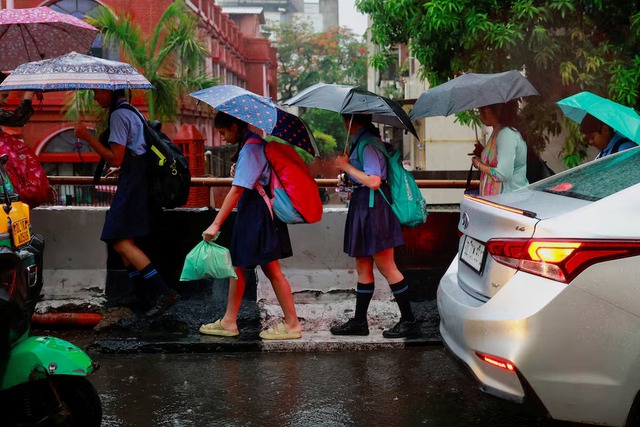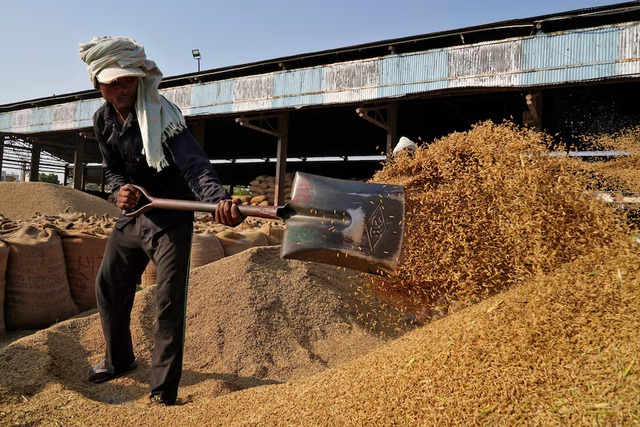
School children use umbrellas to cover themselves from the rain as they walk to school, in New Delhi, India, May 2, 2025. Photo: Reuters
The monsoon is the lifeblood of India's nearly $4 trillion economy, delivering almost 70 percent of the rainfall needed to water farms and replenishing aquifers and reservoirs.
Nearly half of India's farmland is not irrigated and depends on the annual June-September rains for crop growth.
The southwest monsoon has further advanced into the remaining northwestern parts of the country, effectively covering the entire country nine days ahead of schedule, the India Meteorological Department said in a statement.

A laborer sifts rice crops in a grain market in Karnal in the northern state of Haryana, India, October 15, 2024. Photo: Reuters
In a typical year, rains lash the southwestern coastal state of Kerala around June 1 and move northwards to cover the entire country by July 8.
The country has received rainfall that is eight percent above average so far this month, IMD said.
An IMD forecast last month said India is likely to see above average monsoon rains for the second straight year in 2025.
Farmers usually start planting summer-sown crops such as rice, corn, cotton, soybeans, and sugarcane after the arrival of monsoon rains.



Max: 1500 characters
There are no comments yet. Be the first to comment.